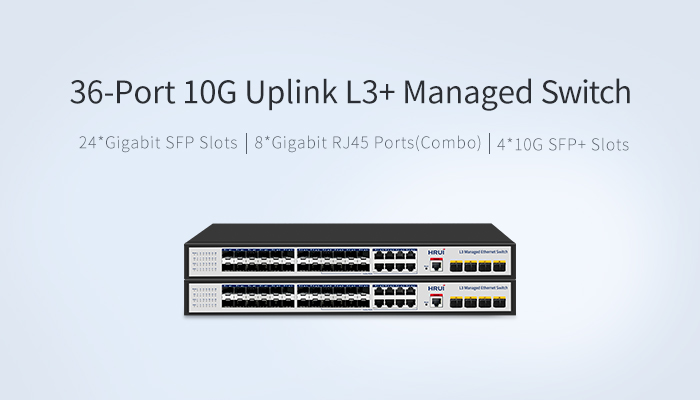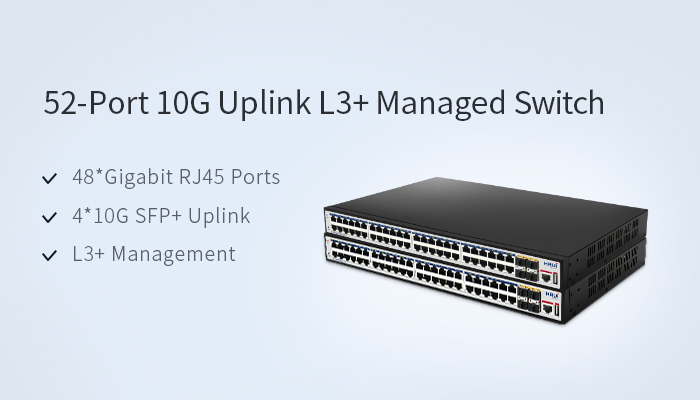Please submit your message online and we will contact you as soon as possible!

2022-01-13
In system networking, access switches, aggregation switches, and core switches are often mentioned. Usually, we call the part of the network that directly faces the user connection or access to the network as the access layer, the part between the access layer and the core layer is called the distribution layer or the aggregation layer, and the backbone of the network is called the core layer. So what is a core switch? How to choose? Let's take a closer look at it together!
1. What is a core switch?
The core switch is not a type of switch, but refers to the switch placed at the core layer (the backbone of the network). It is located at the top layer of the three-layer network architecture and is equivalent to the company's senior managers. Its main function is to quickly forward data from the aggregation layer, and to provide a fast and reliable network architecture through high-speed forwarding of data.

The core switch is generally a Layer 3 switch with network management functions. Generally speaking, core switches have a large number of ports and high bandwidth. Compared with access switches and aggregation switches, they have higher reliability, redundancy, throughput, etc., and relatively lower latency. For a network with more than 100 computers, if you want to run stably and at high speed, a core switch is essential.
2. What factors need to be considered when choosing a core switch?
The main purpose of the core layer is to provide an optimized and reliable backbone transmission structure through high-speed forwarding of communications. Therefore, the core layer switches should have higher reliability, throughput and richer functions. When choosing a core switch, focus on the following aspects:
1)Port type/Rate/Quantity
When selecting the port type, speed and quantity of the core switch, you should refer to the port type, speed and quantity of the aggregation layer switch, and select the appropriate one. If the budget is sufficient, you can choose a core switch with rich port types or a large number of ports. For example, choose a switch with 10 Gigabit uplink ports or with stacking ports, so that even if the network demand increases in the future, it can meet the expansion needs.
2)Backplane Bandwidth
For core switches, if you want to achieve full-duplex non-blocking, you must meet the minimum standard requirements (backplane bandwidth = port number * port rate * 2), the higher the backplane bandwidth, the faster the data exchange, the core switch The stronger the data processing capability.
3)Forwarding Rate
Because the core switch carries huge network traffic, the forwarding rate of the core switch is usually higher than that of the access/aggregation switch. Mpps + number of gigabit ports × 1.488 Mpps + number of 100-megabit ports × 0.1488? Mpps)]. The forwarding rate required by the core switch depends on the number of devices in the network. You can determine the forwarding rate required by the core switch by querying various traffic reports and analyzing user groups. Do not blindly select it, which will cause network bottlenecks or waste of resources.For a Layer 3 switch, when the backplane bandwidth and forwarding rate both meet the minimum standard requirements, the switch is qualified.

4)Link Aggregation
Link aggregation refers to aggregating multiple physical ports together to form a logical port, which increases link bandwidth and ensures network stability. Therefore, it is better to choose a core switch with link aggregation function, which can provide sufficient bandwidth for the traffic sent by the aggregation switch to the core switch, and allow the aggregation switch to transmit traffic to the core switch as efficiently as possible.
5)VLAN And QoS
With the continuous increase of global data traffic, the voice, video, data and other traffic in the network will continue to increase. When the network traffic is large, the switch may have problems such as unreasonable control, resource allocation and even network congestion. It is not wise to just blindly increase the bandwidth of the core layer.
VLAN division is mainly for regional division of different applications, which can effectively control and manage the network. QoS can give priority to real-time and important data traffic under the existing bandwidth conditions, thereby effectively solving problems such as network delay and congestion. Therefore, it is an economical and effective way to choose a core switch that supports VLAN division and QoS.
6)Redundant Performance
The redundancy capability of the core switch is the guarantee of network security, so it is very important to choose a core switch that can provide more redundancy, so that when the hardware fails, it can quickly switch to avoid network paralysis, and even if the future network needs Growth can also meet demand.
In addition to port redundancy (slot redundancy), module redundancy, power supply redundancy and other hardware redundancy, the routing redundancy of the core switch is also very important. When an aggregation switch connected to the core switch fails, the Fast switching between HSRP and VRRP protocols realizes redundant backup of dual lines and ensures network stability.
7)Security
The core layer, as the backbone of the network, if attacked by viruses or hackers, the entire network will fail or even be paralyzed. Therefore, it is necessary to choose a core switch with higher security performance.
For example, the network management function can control the network through ACL (Access Control List), flow control, etc.; the ARP (Address Resolution Protocol) protection function can effectively reduce the ARP spoofing in the network; VPN (Virtual Private Network) can use special encrypted communication protocols in many A secure and dedicated communication line is established between two corporate intranets.
3. More Parameters To Consider
In addition to the above parameters, core switches also need to look at functions such as stacking and hot backup. These functions determine the performance, efficiency, and stability of core switches in practical applications.

The core switch is the core and heart of the entire network. If a fatal failure occurs, the local network will be paralyzed, and the loss caused is difficult to estimate. Therefore, when we choose core switches, we often see that some core switches have functions such as stacking or hot backup.
Using hot backup for core switches is an inevitable choice to improve network reliability. When a core switch cannot work at all, all its functions are taken over by another backup router in the system until the router in question returns to normal. This is the hot backup routing protocol.